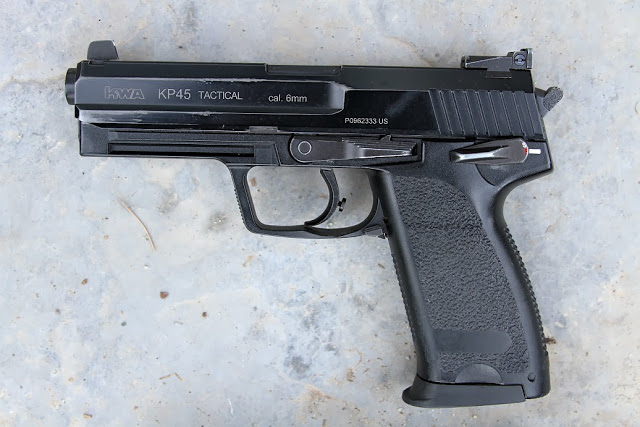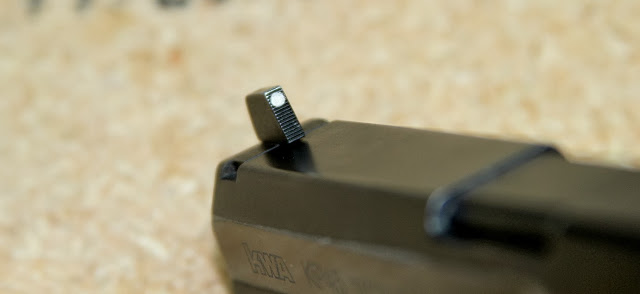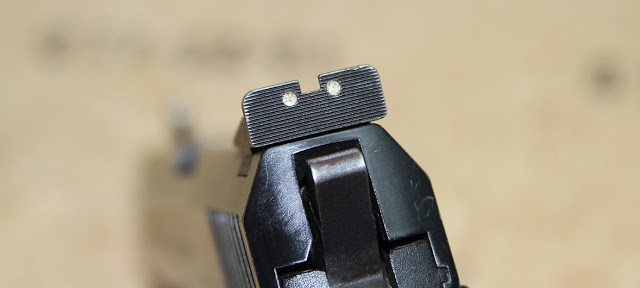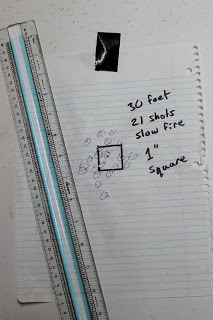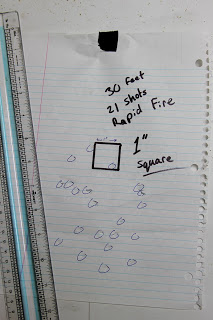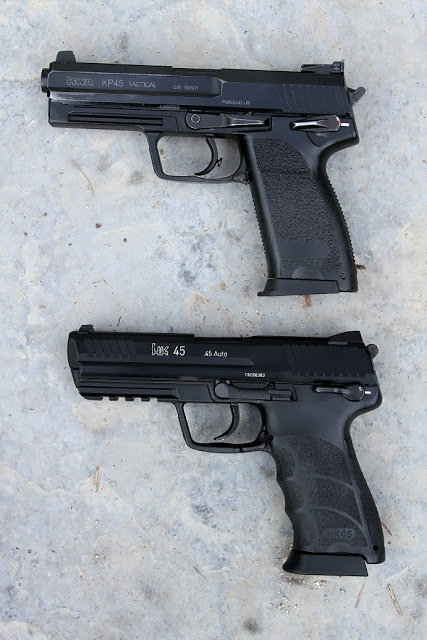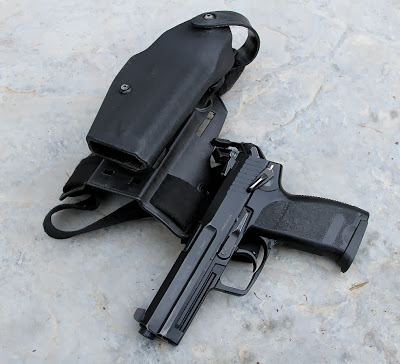 It’s been approximately four years since I bought my first KWA USP Tactical. In my opinion, a review
It’s been approximately four years since I bought my first KWA USP Tactical. In my opinion, a review
on an airsoft gun doesn’t really count until you’ve really put it through its paces. Admittedly, four years is certainly a lot longer than most individuals take when doing a gun review. I blame this mostly on the lack of time to put forth a review sooner. However, I do find it hard to place a lot of credibility on a review when all the end user has done is take it out of the box, remarked on its cosmetic features, and maybe its gearbox performance, and maybe run a magazine or two through it. Never mind that they seem to spend an inordinate amount of time on the appearance of the box itself, as though that is an important buying decision in and of itself (hah!)
In truth, it is only through actual hard use that you will completely determine how something will hold up over time. Some problems manifest themselves immediately out of the box, some take days, or weeks, or months to crop up. So to me, four years of hard use is certainly more than satisfactory enough to remark on the durability and performance of the KWA USP Tactical.
Features
The KWA USP Tactical for those who don’t know is based on the famous Heckler & Koch USP Tactical chambered in .45 ACP made in Germany. As far as appearances go, the the KWA closely replicates the look and feel (albeit not the weight) of the real USP Tactical reasonably well. There are some minor differences, but overall the effect is achieved. My version is an older one before they used full HK trades. As such, it bears the KWA logo across the slide. KWA utilizes the NS2 gas system in all their pistol designs. The NS2 system has a two-stage internal expansion chamber that delivers gas more efficiently. This design has facilitated faster cycling and harder recoil; both of which are nice to have features in a pistol designed to mimic realistic function.
The KWA USP Tactical features a single and double action trigger with an over travel adjustment. Adjustable sights are standard, and are nice and tall in order to clear a variety of suppressor styles. The magazines hold 25 rounds, and comprise the bulk of the pistols weight. The KWA also sports fully ambidextrous controls (minus the slide release). The safety also functions as a decocker, allowing you to carry the pistol “Cocked and locked” in similar fashion to a 1911. The magazine release is ambidextrous and functions very differently than a push button style magazine release does. Some folks hate the magazine release and it is a point of constant contention with them. For the most part, I would say this is due to operator failure and unwillingness to adapt and learn a new system. To properly operate the magazine release involves simply pressing down with your trigger finger. No rotation or futzing of the grip is required. Once you learn the technique, you can accomplish a reload and get on target a lot faster than a push button release. Having run various H&K pistols for the last 10 years now, I feel this style of magazine release is vastly superior to push button releases. A well versed individual would of course school themselves on both styles and train with them accordingly. That is of course personal opinion, so take it for what it’s worth.
The one drawback I do feel this pistol has is with regard to the proprietary rail system. The USP Tactical does not use a picatinny rail style interface. There are workarounds to this, of course. Surefire and GG&G both make rail adapters, with the latter being the lowest profile and better one. These allow you to use essentially any light or laser on the market that is designed for a picatinny rail. Alternatively, one could always use light/laser units designed expressly for the proprietary rail on the USP, of which there are many to choose from. The Laser Devices Blast 2 unit being my personal favorite. If you do not use a laser or light, then this shouldn’t be a concern for you. Additionally one must consider that the varieties of holsters available that support a dedicated weapon light are few and expensive.
Modifications
My first task upon purchasing the pistol was to remove the orange from the muzzle. Admittedly, this isn’t at all easy to do. The plastic outer barrel is not of a ‘solvent resistant’ plastic blend – thus using any sort of solvents or cleaners in an attempt to remove the orange paint results in melting the barrel. No matter… I simply cut the threads off, gave it a quick polish and cleanup with a file and sandpaper and it was good to go. KWA offers an aftermarket full metal outer barrel that does not feature the orange threads, but does not recommend or endorse it due to it “shortening the lifespan of the pistol.” A metal barrel would be the ideal solution for folks who like to run suppressors versus the plastic barrel, which is known to snap off with heavy weight.
Sometime later I wound up giving the internals rails of the slide a nice polish, removing any finish and rough spots. I also polished the area around the inside of the muzzle. This is not a necessary step, actually. The KWA will run just fine without a polish. My goal was to simply make as smooth an operating environment as possible for the pistol. I also modified the sights a bit with a drill bit to make a small concave hole that I filled with white paint to get a 3-dot style system set up and to make the sights more visible in low light conditions.
A note on the sights: contrary to the standard UPS, the USP Tactical model features quite tall sights. These are tall on purpose, and are designed to allow sighting over an affixed suppressor. As such, you may notice at closer ranges that you are shooting a little low when aiming dead on target. This is because the sights are taller than the bore axis. Simply aim a little higher and you will hit dead center. In truth, I feel this pistol is optimised for shooting at longer ranges (at 35-50 feet you will hit straight and true.)
Performance and Accuracy
My only other modification to the pistol was the installation of a Precision Combat Technologies 6.01 tight bore barrel. While the stock KWA barrel was satisfactory in the accuracy department, I felt the pistol could honestly do better. With the PCT barrel and using a stock hop up, I can obtain quite accurate groupings at all ranges. I typically shoot .25g Biovals from this gun. Average velocity with .20g BB’s has remained a relatively constant 345 FPS over the past 4 years. That this pistol has maintained its same level of FPS out of the box over the course of four years is pretty impressive to say the least.
Shooting in fast rapid fire, the groups obviously open up a bit, and you will also notice the cooldown effect of the propane as the latter shots start to lose altitude and begin to group low. Still, this is a satisfactory group and will certainly make someone on the receiving end unhappy.
Disassembly and maintenance is sublimely easy. I have, however, never completely detail stripped this particular weapon as I have never had need or occasion to. I intend to do this within the end of the year, however, mostly to sate my curiosity. The one time it took a particularly nasty bath in the sand only required me to open the slide and swish her around in the river some before returning her to service (that was 3 years ago now.) I have yet to replace a single part internally or externally, save for a hop up bucking that I damaged while installing the barrel. The sights have held their zero perfectly and haven’t worked loose or fallen off.
KWA’s finish isn’t especially known for being high quality or durable in the long term. I’ve evidenced a lot of holster wear on the front end especially. One thing to note with it being an aluminum slide: on the areas that have the finish completely gone it can be prone to minor aluminum oxidization if you neglect it after a high moisture environment. Wipe it off with and it’s good to go again. I suppose I could refinish the pistol in the future, but provided one stays on top of it as you would with any sidearm, it isn’t a big deal and I think the wear adds to the character.
The polymer frame has been quite durable and tough. I have zero complaints regarding this aspect of the pistol. There are some nicks and scratches here and there – mostly on the right side of the pistol grip – but it doesn’t affect the function of the pistol in any form. The magazines have held up very well (I own five of them), including being intentionally dropped on the ground. I’ve never replaced an o-ring, had to fix a valve, or do anything other than regular maintenance with silicone oil and cleaning.
I’ve fed this gun a steady diet of propane gas (with a few drops of silicone oil added every 3rd mag fill) and it has functioned flawlessly and without hiccup every time. I’ve fired countless bags of ammo through her of every variety and brand and she’s ate it all without complaint. She’s been dunked in water, sand, mud, and dirt, drug through the bushes and smacked against trees. There are dings and scratches and finish wear. For most of her life she’s ridden in a modified Safariland 6004 series drop leg and has never once worn a lanyard or been lost due to faulty holster design. She’s been a trusty and faithful backup any time I needed her. I have little love for KWA’s AEG’s, but much respect and love for their pistol designs as they’ve all been quite reliable and rock solid for me.
The New Girl
Recently I purchased a KWA HK45 Tactical – the newer, younger heir and successor to the USP lineup. The ergonomic and feature improvements are readily obvious and this pistol feels incredibly comfortable in my hand. For the immediate future, my USP Tactical will rest on the shelf for the most part while I run the new pistol through its paces. Time will tell how well – and if it will hold up as well – as the USP Tactical has.
